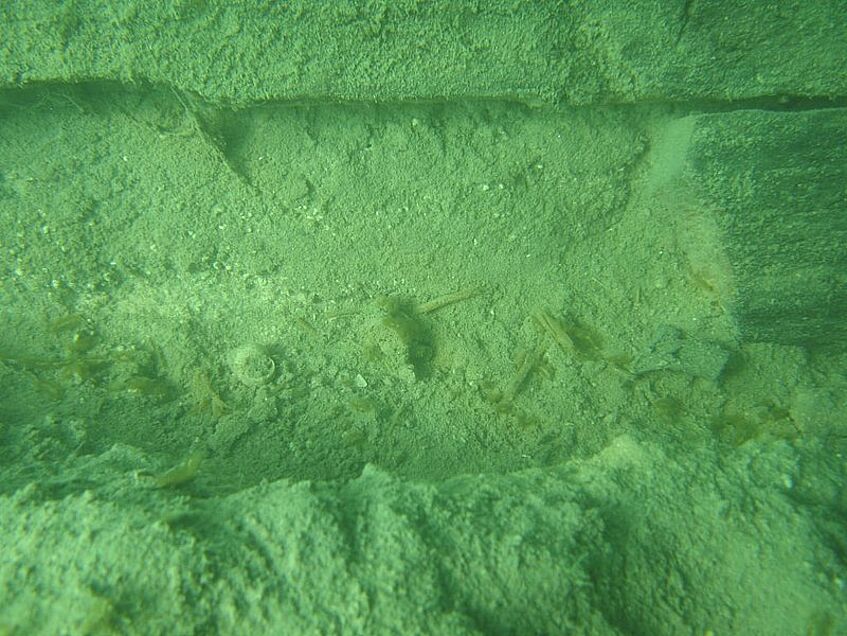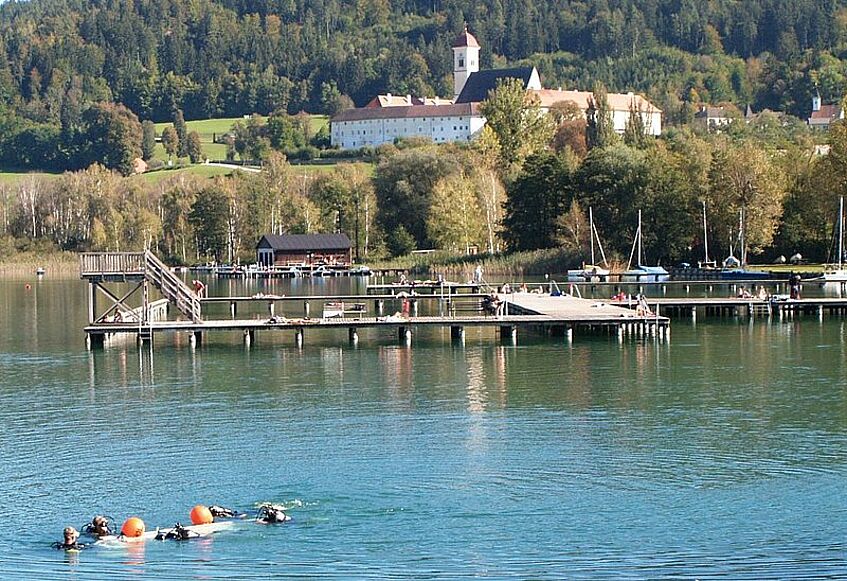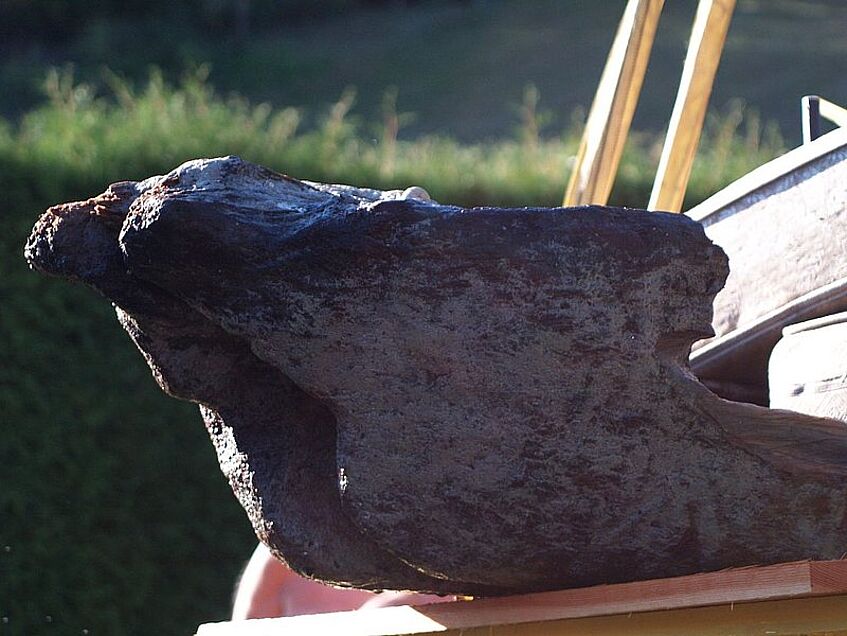Recovery of a Bronze Age dugout at Lake Längsee/ Carithia
On Sept. 30, 2011, we were able to recover the remains of a Bronze Age dugout from Lake Längsee / Carinthia.
In 2007, the dugout had attracted the attention of amateur diver Erwin Wohlfahrter in the area of the bathing platform of the municipal bathing beach St. Georgen at the Längsee. He photographed and filmed the remains of the boat and reported the find to the lifeguard, who communicated to the Carinthian State Museum.
Dr. Paul Gleirscher from the Carinthian State Museum, who already recovered two dugouts from the Längsee and Klopeinersee in recent years, contacted the VIAS-Dendro-Laboratory, knowing our work exploring the Neolithic pile dwelling in Keutschacher See for years.
After the evaluation of a C14-sample in the VERA-Laboratory of the University of Vienna, a date between 1630 and 1460 BC was found for the alder the boat had been made of.
After generous concessions on the part of the finder and the Austrian Federal Forestry as landowners and cooperation partners, and the approval of the Federal Monuments Office (BDA), we were able to take action. We were supported by divers of the Carinthian and especially the Keutschacher water rescue and the volunteer fire department Glansdorf and St. Veit.
First of all, photos of the position of the boat hull were taken from different perspectives and the next surroundings were searched for traces of human activity. After no evidence of such as soil stratification, charcoal or pottery fragments was found, the side panels stuck in lacustrine chalk, were exposed, carefully lifting the chalk together with small snail shells with bare hands along the soft wood. Doing so, it turned out that the dugout, lying upside down, had pushed its sidewalls with its weight. One side was bent into the interior of the boat, the other to the outside. The latter was broken into several pieces and had to be recovered piece by piece after the photo documentation.
In the next step, the dugout was turned over by the divers and packed in a salvaging bag to prevent any further loose parts from swimming away. The bag was towed to the adjacent sauna on the shore, hanging on two buoys. There, a fire truck crane lifted the fragile relic ashore.
The rear had to be carefully supported beforehand to prevent it from breaking off. The dugout was wrapped with plastic foil immediately after removal from the water to prevent it from drying out.
After carefully transporting it to our laboratory in Vienna, the dugout had to be preserved. For this purpose, it is first stored in a basin with demineralised water and deacidified. Then the cell walls of the wood, which have become unstable over the millennia, have to be strengthened, otherwise the hull would tear and shrink strongly during drying. When this process is successfully completed, the slow drying process can be started, after which the boat is reconstructed from the sections and exhibited in a museum.
After the pile dwellings were included in the UNESCO World Heritage and selected as one of the five Austrian examples of island lake dwelling at the Keutschacher See, the long planned Museum of lake dwellings in Keutschach would be an ideal presentation site for displaying and bringing back to live different aspects of the daily life on the water dating back thousands of years, including vehicles as well as buildings.



